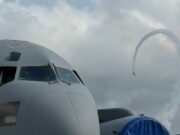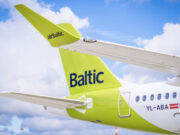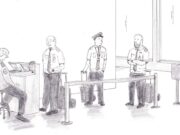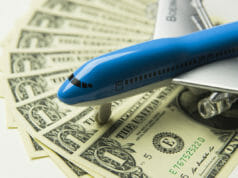Last month the Preferential Bidding System, or PBS, was detailed to see how pilots bid their monthly schedules. Another system utilized, albeit less popular amongst airlines, is the Line Bidding system. This system has a bit of advantages over the PBS system, in the eyes of pilots. As is the case with PBS, pilots should familiarize themselves with Line Bidding in order to optimize their monthly schedules.
Line Bidding is different than PBS in that it requires the airline to make the monthly schedules based on the trips, or pairings, available each month. Compared to PBS, this is more time consuming since it requires personnel (usually an appointed Scheduling Committee from the airline’s union) to create the schedules called lines. Specific lines are created that the pilots bid on. Lines generally have the same trip characteristics, such as a line with all day trips or a line with all commutable trips. Pilots rank the lines in the bidding system (for example a pilot may prefer Line 12, then Line 8, then Line 24, and so on). Lines are then awarded strictly following seniority order.

Pilots who bid into conflicts between two months is a common issue. If a pilot has a trip from June 30th to July 2nd and bids for a line which has a trip July 1st-July 4th, a conflict arises. The company then has the discretion to alter the awarded line (in the second month). Generally, the company can add or remove trips to any of the first six to seven days of the pilot’s schedule to keep the pilot within a certain amount of credit from his/her awarded line. This may result in a pilot originally having a specific day off (say July 5th) and subsequently working that day. There is one airline that will instead drop the trip in the later month (July 1st-July 4th) and pay protect the pilot without adding any subsequent trips. Conflicts can also arise when pilots bid into FAR 117 rest or duty period issues.
Bidding during a vacation month can prove to be very beneficial for pilot. A week of vacation is preloaded onto a pilot’s schedule when it is time to bid during a vacation month and each day is credited a certain amount of hours. A process called vacation touching arises when a pilot bids a line where a trip overlaps any vacation day. The trip is taken off that pilot’s schedule. If the pilot understands how line bidding works, he or she can bid to have trips overlapping the beginning and end of his or her vacation so that both trips are removed. It is not uncommon for pilots to turn one week of vacation into two or three off through vacation touching.
Pay during a vacation month may become a bit complex due to vacation touching. Say a pilot is awarded a line with 80 credit hours and, due to vacation touching, two 20-hour trips are removed. This leaves the pilot with 40 credit hours (80-20-20) which is now the pilot’s line value. Depending on the airline, the pilot has a minimum guarantee each month (say it is 75 hours). In this example, a pilot works 40 credit hours and is paid 75 credit hours. Each airline has different work rules on picking up and trading trips during vacation months. In the previous example, if the pilot is not aware of how the rules work, the pilot may end up working more than 40 hours but still paid the same 75 hours (termed working for free).
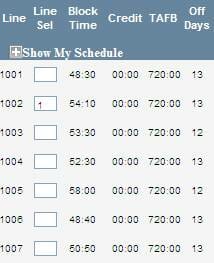
Say the pilot in the previous example, after the two 20-hour trips are removed, has two 20-hour trips remaining. The pilot then trades one of those 20-hour trips for a 25-hour trip. The line value increases by 5 hours but the minimum monthly guarantee generally never increases more than is set by the airline (75 hours in this example). Therefore, the pilot will now work 45 hours and still be paid 75 hours (working an additional five hours with no extra pay). “Working for free” generally refers to trip trading; picking up trips on days off is generally paid on top of the 75 hours.
Airlines are transparent in showing which pilots are awarded what schedules by publishing which lines were awarded to whom. The time frame for inputting one’s bid, coined the bidding window, is open between four to seven days at the beginning of the month. Schedules are then released a day or so after the bidding window closes. The company then has a few days to make necessary modifications (i.e. recurrent training) to pilots’ schedules before allowing pilots to make changes. As previously mentioned, pilots picking up trips on days off are generally paid in addition to their minimum monthly guarantee.
Although line bidding is not as popular amongst airlines (compared to PBS), it does have significant benefits. The system overall is not complex in design, facilitating the process for pilots to bid for the trips they desire, but with less flexibility than PBS. Additionally, line bidding is preferred during vacation months because of the additional days off that can be obtained. Because of its higher associated cost though, line bidding is slowly being phased out. Regardless of what bidding system is in place, pilots must be familiar with how the system works in order to efficiently bid.









